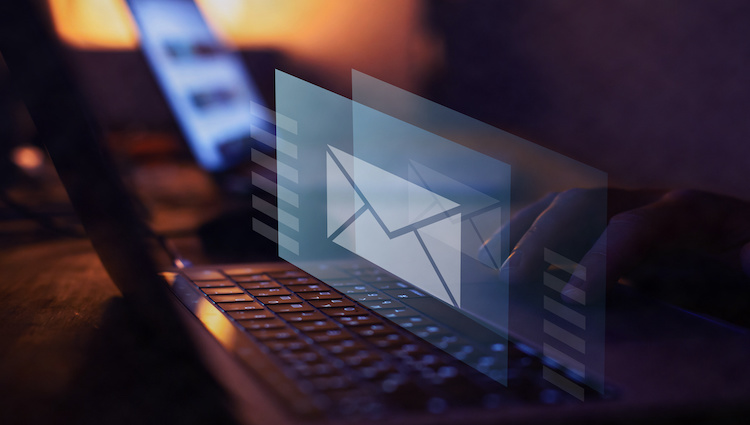
Choosing a method of marketing communication is a foundational layer of a strong nonprofit marketing strategy. In the past, major gifts officers relied heavily on direct-mail fundraising as a form of communicating with donors.
Like everything, things have changed with the increased use of the internet and e-mail as a form of communicating. People began to question whether direct-mail fundraising was still the best option.
With options come decisions, and major gifts officers must decide what works best for their prospects and marketing strategy. Nonprofits are finding that there is a place for both direct-mail fundraising and e-mail marketing in the realm of major gifts, but it is important to strike the correct balance for maximum efficiency.
So, how do you choose? How do you ensure that your mail won’t get stuck in a pile on a donor’s counter or that an e-mail won’t get immediately deleted? Crafting a comprehensive donor strategy involves deciding when to use the most effective method of fundraising communication.
It is safe to say that the way we communicate has changed over the last decade. What was once a surefire way of connecting with prospects sometimes ends up futile.
There is still a lot of support for direct mail fundraising, however, and evidence indicates that it will be an effective means of nonprofit communication for years to come.
The USPS states that 56% of people believe that receiving letters is a pleasure, and 67% believe that receiving mail is a more personal experience than other forms of communication.
E-mail, on the other hand, has only an 18% open rate and a 2.6% click-through rate. Despite these lower open rates, 69% of nonprofits around the world communicate monthly through e-mail, and 74% send fundraising appeals on a regular basis. Most people view these messages on their smartphones, which allows organizations to put a specific “donate now” button right in prospects’ hands.
If these statistics seem confusing, it is because while they both have their pros and cons, there is a long list of reasons why both direct-mail fundraising and e-mail are important instruments in your major-gifts toolbox.
The benefits of direct-mail fundraising are numerous.
While e-mail communication can feel mass delivered, a letter has the feel of person-to-person contact. People respond well to forms of communication that allow them to feel connected to the sender, and direct-mail fundraising can be personalized for individual donors. In fact, adding a name to your fundraising letter increases response rates exponentially.
Direct-mail fundraising also has a higher response rate. Between 5 and 9% of people respond to mail, which significantly outpaces e-mail responses.
There are some downfalls to sending letters. For one, you can’t track the same metrics as you can with e-mail. You can track how many letters you sent and if they responded, but you can’t tell how many left them in a pile in the corner.
Letters also require printing, envelopes, and postage, and there is a delay in receiving the letter as it must be delivered by hand. You will need to determine whether the upfront cost of this type of communication offers your organization a good return on investment.
Despite the higher efficacy of direct-mail fundraising, there are still plenty of ways to utilize e-mail as a marketing source.
Online communication has proven successful in fundraising appeals for the majority of nonprofits. Thirty-eight percent of organizations report meeting their donation targets online, and a further 24% report receiving higher amounts than they expected.
An e-mail has the advantage of being relatively inexpensive. While direct-mail fundraising has a high upfront cost, e-mails are nearly free, costing only the price of your marketing software.
It is also a much quicker form of communication, allowing you to relay your message to many prospects in a matter of seconds.
Using a platform designed specifically for e-mail marketing allows you to obtain metrics that can help customize your communication strategy. You can easily see how many people opened your message and how many people clicked on the links within it. You can then target engaged prospects with further communication or future cultivation.
There is also a benefit to creating a lead magnet with an opt-in form on your organization’s website. This easily expands your target audience for newsletters and other e-mail communication. The people who sign up are already interested in your organization, so you can begin to cultivate new donors.
Since there is a place for both direct-mail fundraising and e-mail marketing in the world of the major gifts, it is in your organization’s best interest to develop a combined strategy that works to meet your goals.
Creating an e-mail schedule with regularly scheduled fundraising appeals can help increase the number of opportunities for recipients to donate. Since online donations have skyrocketed over the past several years, it makes sense to continue to utilize this low-cost method of solicitation.
One of the complaints about e-mail communication in fundraising is that it lacks personalization. Keeping this in mind can help you write more specifically tailored e-mails. You can also use auto functions that allow you to insert the recipient’s name automatically.
Knowing how to craft a donor letter is a critical component of successful marketing, whether by direct mail or electronic communication. Hitting the right personalization points can make all the difference in response rate. You have the chance to tell the story of how your services have helped people and how donors’ contributions will allow your organization to continue to provide this assistance.
Setting up automated e-mails for special milestones can help prospects feel appreciated. Use the segmenting capabilities of your marketing software to target the right people at the right time.
It is important to keep in mind that both direct-mail fundraising and online communications provide you with a unique opportunity to connect with your audience and drive home the mission of your organization. They are powerful tools for the cultivation of new donors and for the stewardship of long-term donors.
The best communication strategy for your organization is the one that serves your mission and donor population most effectively. If you know that your prospects are mostly older and that receiving letters is their preferred way of hearing from you, then making sure you serve that preference is key. If you find yourself with a pool of millennial prospects and donors, perhaps you should look at increasing the number of e-mails you send.
Since it takes many touchpoints before a prospect converts to a donor, whichever way you choose to communicate is usually beneficial on some level. Donor data is one of a nonprofit’s most useful tools, and tracking metrics like e-mail opens can only help.
You never know which point of contact will result in a prospect deciding to donate to your nonprofit, so don’t limit your communication methods. If you find that your current e-mail strategy isn’t performing as well as you’d like, you can always run A/B testing to see which versions of similar messaging are most effective.
If you haven’t focused on direct-mail fundraising, it is time to consider a way to work more letters into your strategy. If you feel like you could bump up your e-mail marketing, there are plenty of reasonably priced marketing programs that can help you create high-converting e-mails to increase your donations.
Whatever method you choose, remember that donor-centric content improves the long-term retention of your donors.

Hands-on, in-the-trenches experience designed to equip you with strategies and skills for success. Choose the one that fits your goals—or take both for maximum results. It’s intense, effective, and built for leaders like you.
Related
800.490-7090
484.680.7800 local
Succeed@MajorGifts.com
Stay Informed!
Webinars, free downloads, tax law changes, more. Subscribe today. You can unsubscribe at anytime.
Copyright 2024 © PlannedGiving.Com
Stay informed with timely news. You can unsubscribe at any time.
Success List